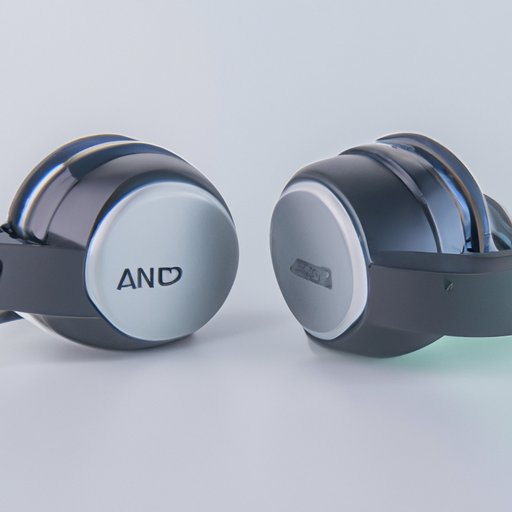Introduction
Active Noise Cancelling (ANC) is a technology that has been around for decades and can be found in many products, from headphones to car engines. Put simply, ANC works by using microphones to detect external sound waves and then playing back an inverse waveform to cancel out the noise. It’s a simple but effective way to reduce background noise and make listening to music or other audio more enjoyable.

The Science Behind ANC Technology
In order to understand how ANC works, it’s important to first understand the basics of sound waves. Sound waves are created when a source vibrates, creating air pressure fluctuations that travel outward in all directions. When these sound waves reach our ears, they create vibrations that our brain interprets as sound.
Noise-cancelling headphones work by using tiny microphones to detect the sound waves coming from the environment. The headphones then generate an inverse waveform to counteract the sound waves, effectively canceling them out. This process is known as “active” noise cancellation because the headphones are actively generating a waveform in response to the external sound waves.
There are two types of ANC technology: passive and active. Passive ANC uses physical barriers such as foam earplugs or insulation to block out sound waves. Active ANC uses electronics to generate an inverse waveform that cancels out the sound waves. Passive ANC is generally less effective than active ANC, but it is also much simpler and cheaper.

Benefits and Drawbacks of ANC
The main benefit of ANC is that it can significantly reduce background noise, making it easier to focus on the task at hand. This is especially useful in noisy environments like airplanes or busy offices. Additionally, ANC can provide a more immersive listening experience as it reduces ambient sounds and allows you to focus on the music or audio more clearly.
However, there are some drawbacks to ANC technology. For example, the technology can be quite expensive, especially if you’re looking for high-end noise-cancelling headphones. Additionally, some people find that ANC can create a feeling of isolation or disconnection with their surroundings. Finally, ANC technology can be ineffective in certain situations, such as when the sound waves vary in frequency or direction.
How ANC is Being Used in Other Applications
ANC technology is not just limited to headphones – it is being used in many other applications, including the automotive industry, home appliances, and industrial applications. In the automotive industry, ANC is used to reduce engine noise and improve fuel efficiency. In home appliances, ANC is used to reduce the noise from vacuum cleaners and other loud machines. And in industrial applications, ANC is used to reduce noise from machinery and other sources.

The Future of ANC Technology
As technology advances, ANC is becoming more sophisticated and capable of providing better noise reduction. For example, newer ANC technology is able to detect and cancel out multiple frequencies at once, allowing for more effective noise cancellation. Additionally, researchers are exploring ways to use ANC in augmented reality and virtual reality applications.
It is clear that ANC technology has a bright future ahead of it, with applications ranging from consumer electronics to industrial applications. As technology continues to evolve, we can expect to see ANC become even more commonplace and capable of reducing noise in more complex environments.
Conclusion
Active Noise Cancelling (ANC) is a technology that is increasingly being used in many different applications. It works by using microphones to detect sound waves and then playing back an inverse waveform to cancel out the noise. ANC can provide significant noise reduction, making it easier to focus on tasks or enjoy music without distraction. However, it is important to consider the advantages and disadvantages of ANC before investing in the technology. As technology advances, we can expect to see ANC become even more common and capable of providing better noise reduction.
(Note: Is this article not meeting your expectations? Do you have knowledge or insights to share? Unlock new opportunities and expand your reach by joining our authors team. Click Registration to join us and share your expertise with our readers.)
